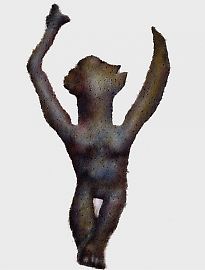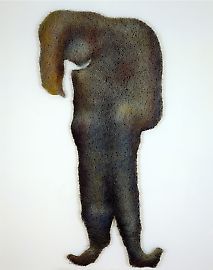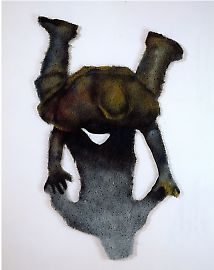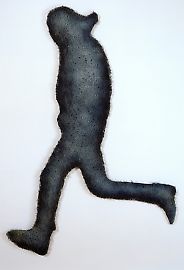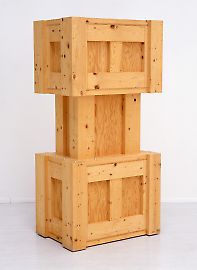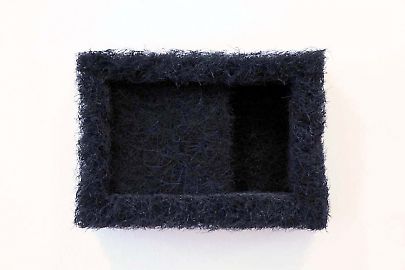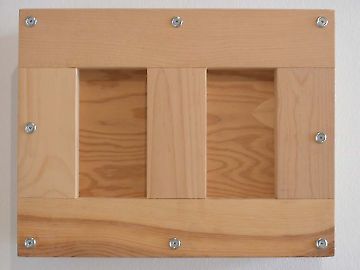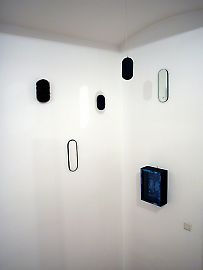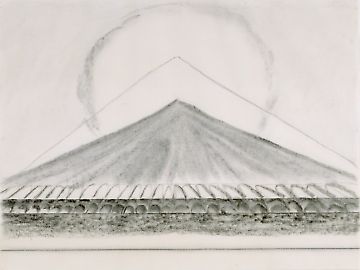Richard Artschwager
Untitled (1000 Cubic Inches), 1996
40,5 x 32 x 13 cm
ed. 46/60 (5 different forms)
plywood, wood, steel-screws
Locations (Brooke Alexander no. 1), 1969
15 x 10 3/4 x 4 3/4 inches
a.p. (ed. 90)
Set of five multiple objects, contained in a wooden box (blue formica surface with a screenprint sliding plexiglas front)
1923 – 2013, New York.
Beginning in the 1960s, Artschwager developed a wide-ranging body of work, questioning the bounds of familiar categorizations of pop art, minimal art, conceptual art, and new sculpture. The Formica tables and chairs characteristic of his work are on the one hand furniture, but also sculpture, and finally visual representation, “painting pushed into three dimensions,” ultimately stations for thinking about the characteristics of things. His art is perception and representation of our vision. Not the object itself, but its interpretation and use in various contexts are what interest the artist. How do I recognize a table? How can I depict it in drawing? When does a table become sculpture? Any object is suitable for his visual analyses and studies about dimension and perspective, space and surface. In his façade design for Georg Kargl BOX (2002), Richard Artschwager was able to achieve a link between the pictorial and the object, three-dimensional image and two-dimensional sculpture by playing over the standard lines that usually demarcate the boundary between painting and sculpture.
Works by Richard Artschwager were shown at Documentas 4, 5, 7, 8, and 9, and can be found in the most famous collections around the world, including Museum für Gegenwartskunst, Basel, Museum für moderne Kunst, Frankfurt am Main, Museum Ludwig, Cologne Museum of Modern Art, New York or the Whitney Museum of American Art, New York.


